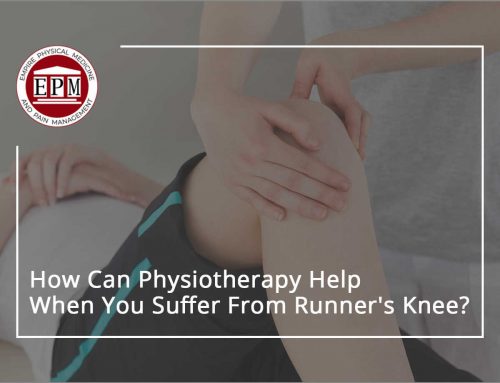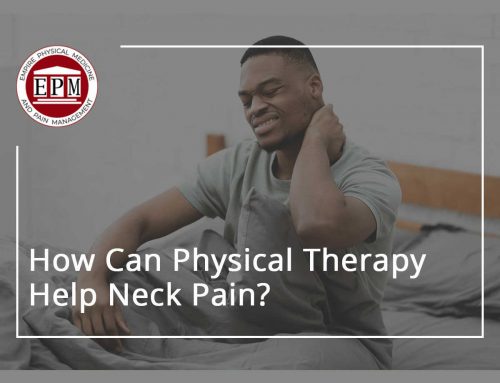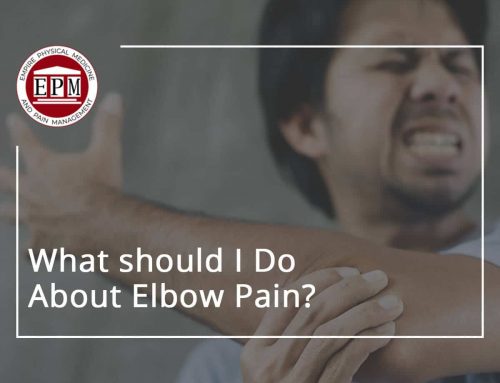
If you are feeling pain in your forearm and elbow from simple everyday motions such as bringing your hand to your mouth while you’re eating, picking up your cell phone or even when it is bent while you’re reading a book, you may have tennis elbow. But, what is tennis elbow and how does one develop it?
What is it?
Tennis elbow, also known as lateral epicondylitis, is an inflammation of the tendons and muscles that join in your forearm and outside of your elbow. It is primarily caused by overuse of these muscles and tendons which lead to small tears in the tendon. Anyone can develop tennis elbow too. In fact, less than 5% of those who have tennis elbow have the condition from playing tennis.
Tennis elbow typically affects the arm with your dominant hand. If you’re experiencing a more sharp, burning sensation right at your elbow, this typically indicates a tendon issue; a more dull pain spread throughout the arm can point to an issue with the muscle.
Common Symptoms:
Those affected with tennis elbow often complain of pain outside of their elbow. They will notice decreased grip strength and may feel pain when their arm is extended at a certain angle. Morning stiffness may occur and they may have soreness in the forearm. Pain may radiate down the arm towards the wrist and you may experience a dull ache even while your arm is rest.
Who is at risk?
Due to the nature of the sport, tennis elbow received its name due to the repetitive nature and swinging of the racquet involved with tennis, which left tennis players prone to injuring these muscles. Athletes are not the only ones at risk, however. Any occupation that calls for a repetitive motion at the elbow or wrist could mean you have a higher chance of developing this condition; this includes plumbers, painters, chefs, etc. Hobbies such as gardening or knitting can also place you at risk if you overuse that muscle. With the rise of computers, tennis elbow can also be caused by the repetitive motions of typing and mouse-clicking that comes with heavy computer usage. Even if you don’t do anything that is inherently repetitive, you could still develop tennis elbow.
How is it diagnosed?
Tennis elbow, which is a result of several tears in the tendon, will not show up on an x-ray. Your doctor will have you perform a number of exercises and have you flex your wrist, arm, and elbow in certain ways to identify where the pain is. To aid in diagnosis, an MRI (magnetic resonance imaging) or EMG (electromyogram) may also be requested.
Treatment options
Tennis elbow usually does not lead to surgery or any serious problems. There are several ways to treat it, including the following:
Brace – Wearing a brace around the forearm for up to six weeks will help relieve the pressure and strain off your tendons and muscles so that the damaged tissue can rest and heal. It also provides support and protects the muscle and tendon.
Ice pack – Place one on your forearm where the discomfort is for 15-20 minutes at a time for a few times a day. This will help decrease the blood flow to the area and reduce the inflammation.
Ibuprofen – Due to its anti-inflammatory nature, ibuprofen can help alleviate the inflammation associated with tennis elbow, thus relieving pain.
Physical therapy – physical therapy is very effective in treating tennis elbow as stretching and strengthening the muscles can help relieve the pain. It will also increase your range of motion and help increase blood flow to the affected area, which is important for healing. Your physical therapist will also show you exercises and stretches to perform at home. We can also show you simple adjustments that you can take to prevent future injuries so that you do not overwork the tendons.
Acupuncture – This ancient Chinese practice can be very effective in treating acupuncture. In fact, according to treatment done at Mayo Clinic, 80% of those treated with acupuncture found long-lasting relief after as little as four treatments. Even more startling was the fact that that other traditional methods were tried to relieve the pain (without successful results) before seeking acupuncture treatment.
Corticosteroid injection – these steroid injections will provide temporary relief. They’re typically used if other treatment alternatives aren’t helping and are injected right into the joint. These shots are usually administered to the same site three or four times a year.
PRP injections – a platelet-rich plasma injection is a treatment option where platelets from the patient’s blood are taken at high concentration levels and injected directly to the injury site. This facilitates the healing process of injured tendons, muscles and ligaments.
Rest – it makes sense that since tennis elbow is caused by overuse, a way to treat it would be to rest the muscles that are overused. Try to avoid activities that may cause pain in the affected arm, elbow and wrist and eliminate any repetitive motion or heavy lifting with that arm.
In 90% of cases, tennis elbow can be treated without the use of surgery. Give us a call at 212-867-1111 or 212-422-1111 if you’re experiencing any pain around your elbow. We will be able to access the affected area, provide a comprehensive rehab program and teach you strengthening exercises you can perform at home.






